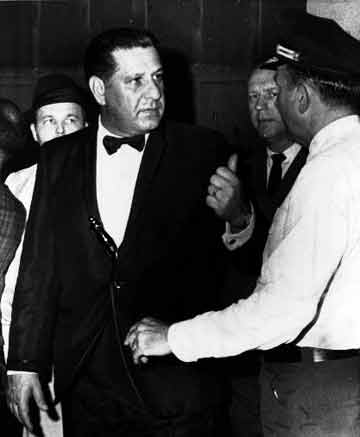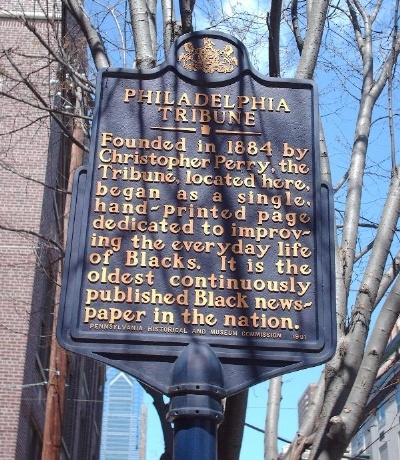The Re-education of Me Table of Contents
- What we investigate is linked to who we are
- The Me nobody knew then
- Mrs. Jefferson’s “Sympathetic Touch” meets Mrs. Masterman’s Philanthropy
- Discovering Masterman, discovering myself
- The electronic music lab at Masterman School
- The Interactive Journalism Institute for Middle Schoolers and the quest for computing diversity
“When I first get up in the morning I feel fresh and it feels like it would be a good day to me. But after I get in school, things change and they seem to turn into problems for me. And by the end of the day I don’t even feel like I’m young. I feel tired.”
John, 13
The Me Nobody Knows: Children’s Voices From the Ghetto, Stephen M. Joseph, ed. (first printed in 1970, reprinted in 2003)
The word that I had been admitted to Masterman, a public school for gifted children, came not a moment too soon. It was April, 1967, I was 10 years old, I was considered one of the top students at Kearny Elementary School, but socially and emotionally, I was failing badly. Had I not been transferred to Masterman when I was, I am not sure how I would have coped with my growing sense of loneliness and isolation. Reflecting upon these experiences leads me to think about how a child’s interactions with home, school, neighborhood and the larger environment affects her perceptions of her place in the world, and her chances of overcoming its obstacles and seizing its opportunities.
In recent years, psychologists have advocated for models of child development that give central consideration to the role of culture and socio-economic status in shaping the way a child views the world and functions within it. Yvette Harris and James Graham, author of the 2007 book: The African American Child: Development and Challenges (Springer Publishing Company, New York, NY.) argue that this is especially important for understanding children of color.
I had never been accepted in Penn Town, the neighborhood in which I had lived since moving to Philadelphia from Camden, New Jersey at the age of six. To begin with, I soon learned that only a few of my peers had ever been to New Jersey, so I was something of a foreigner. Even though Camden was only a few minutes away by car, and we lived fairly close to the Benjamin Franklin bridge, not many families owned a car, and the public transportation services that shuttle between the two cities now hadn’t yet been built. I must have talked about Camden too much, because I remember a boy telling me that he had been to New Jersey once, and it wasn’t so special, so there!
My father’s second-hand Chevy and my outsider origins weren’t the only problems. I lacked the social qualities that would have given me some currency among my peers. I was a slow, awkward runner, I couldn’t fight, and I had left Camden before I learned to jump double-dutch. Worse yet, I was double-handed, which meant that I couldn’t turn the ropes with a sufficiently reliable rhythm. To make matters worse, I was an only child, so I had no natural allies, and I had my own room. My father and stepmother wore second-hand clothes, but I had a new school wardrobe from Sears every year, and the latest toys. Worst of all, I was the teachers’ pet.
I might as well have had a kick me sign tattooed on my forehead. As is true in every neighborhood, we had our designated bullies, and I was a favorite target for teasing and occasional beat-downs. For the longest time, I didn’t fight back; I’m not sure why. Nor did I know how to play the dozens, the ritual game of insults built on race, class and gender stereotypes. I also had the annoying habit of questioning the logic of the taunts directed at me and others during an argument. It was common, for example, for a girl to say that she would “beat the black off” another girl. I couldn’t help wondering about that, because they also went around saying there was something wrong with looking too black. Following that logic, wouldn’t they consider it an improvement to have some of the “black” removed? Like the robot in “Lost in Space,” I spent a lot of time saying, “That does not compute.”
Eventually, there was a girl who declared that she would beat me up after school that day. She had been threatening to fight me since summer camp, and now the weather was cold enough for a coat. She had been a constant menacing presence. We met at the appointed hour, and, thinking that I would stand up for myself for once, I took a swing at her. She pulled my coat over my head and pulled my hair out An excited crowd ringed around us and made enough noise that eventually some neighbor heard and got my stepmother to come rescue me.
Her response to the incident is telling. She brought me and the other girl into our apartment and told us that we were letting down the race by fighting like dogs in the street. She extracted apologies from us, and a promise to try to get along. I think a conversation with the girl’s mother followed, or at least attempted – that would have been the norm. I think it was not long after that when my birthday coincided with the date of our regular Girl Scout meeting and she decided to host it at our place, complete with cake and ice cream. My tormentors were part of the troop. I can’t say we became friends after that, but I don’t recall any more beat-downs.
But by then, I carried the terror inside of me. Not just the fear of the neighborhood bullies, but the spectre of even worse violence. There were the tales of the tackheads, dark–skinned black girls with (snap fingers) that much hair who would supposedly grab girls, beat them, and carve up their faces to make them ugly. There were the gangs – in our neighborhood, there was 12th and Wallace and the Valley – gang geography was a required survival course in in everyone’s curriculum. During my childhood, the gangs went from zip guns to real guns, and before I left high school, some of my childhood neighbors, schoolmates and relatives were dead, or had suffered near-fatal injuries.
These dangers were mostly visited on boys, of course. In her book, Getting Played: African American Girls, Urban Inequality and Gendered Violence (NYU Press, 2010), sociologist Jody Miller described the violence and threats of violence routinely visited up African American girls and women in urban neigbborhoods.
Without going into detail, I will say that by the time I was ten years old, I witnessed or experienced actions that I now recognize as acts of assault and sexual harassment, and coercion, and I know that I was not alone. One did not talk about having been the victim of such experiences, although it was not unusual to hear a boy brag about having “felt somebody up,” or to hear that some group of boys, “ran a train” (gang-raped) a girl. That was usually told without sympathy for the girl, who was thought to have allowed herself to be in the wrong place at the wrong time.
Layered on top of all of this was the violence in the adult world – the real and rumored incidents of police brutality, the arrest of a neighbor’s father for killing someone in a bar fight, the occasional sight of a violent domestic argument that spilled out into the street.
I write of these things now because I recognize them as experiences that could have derailed me, and that did, over time, derail some of my peers. I also recognize that today, I could easily have met with the fate that befell Derrion Albert, the 16-year-old Chicago honor student who was stomped to death in September, 2009 as he was trying to escape a street fight that erupted as he was leaving school.
If we are serious about getting more young people from under-represented backgrounds into computing-dependent professions, our interventions must be sensitive the lived reality of children’s lives.
In another section of this work, I will explore these culturally sensitive models of child development and their implications in more detail. For now, I want to close with a presentation by Dr. John Rich, a trauma physician who heads the Center for Nonviolence and Social Justice at Drexel University. Dr. Rich’s work focuses on young black men who are victims and perpetrators of violence. Using an ethnographic approach, he tries to help us see and understand the human hurt at the heart of behavior that is beyond the comprehension of most people.







